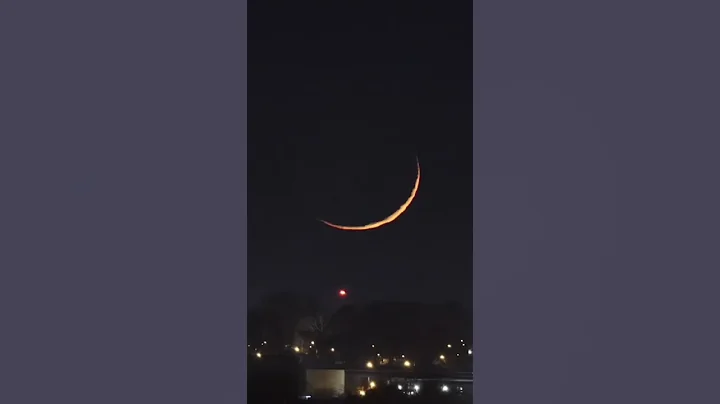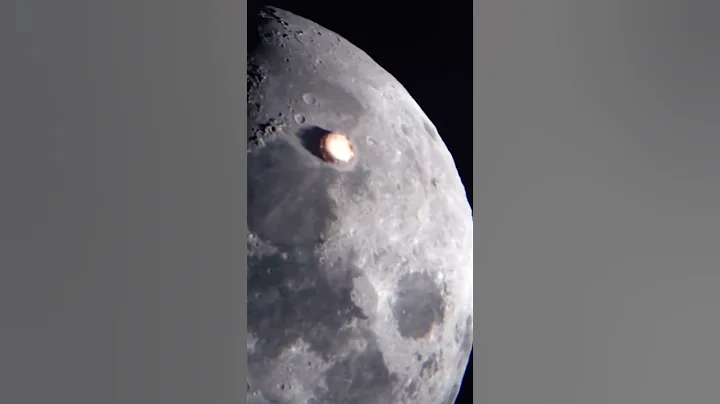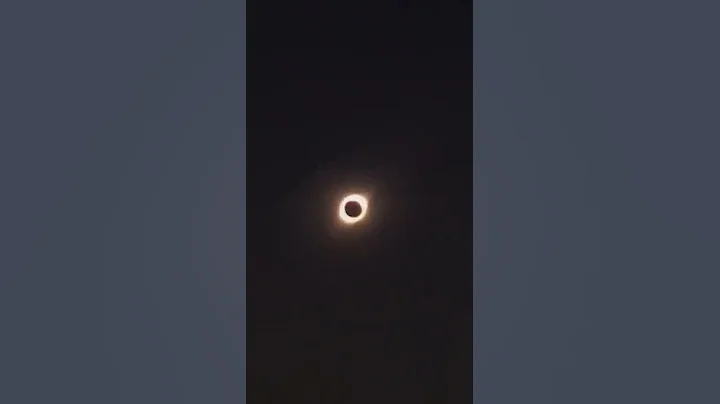Is super moon considered an "astronomical drama"? How long does it take for it to appear? What's going on with " blood moon " and " blue moon "? Let’s see what astronomers say.
Written by Wang Huishen (intern reporter) Editor/Lv Bingxin
New media editor/Lv Bingxin
Interview with experts:
Kou Wen ( Beijing Planetarium senior engineer)
"Super Moon" has become a hot search again. According to reports, this year’s largest “super moon” will appear in the night sky, and the best time to observe it is from the evening of July 13 after moonrise to the early morning of the 14th.
However, this time, unlike the previous excitement, the public seems to have become somewhat accustomed to super moons - "It seems that every once in a while, there is news about super moons" "I remember that I just took pictures of the super moon last month" "Yes Is there a super moon every month?”…
In fact, on the 14th of last month, a super moon had already appeared in the night sky. So, is the super moon a "big drama" in the field of astronomy? How long does it take for it to appear? How do astronomers view the many "wonders" and "anomalies" about the moon?

▲The super moon taken on April 28, 2021 (Picture source: People’s Daily)
Are there more and more super moons?
Supermoon is a term proposed by American astrologer Richard Noelle in 1979. But is not a professional term in astronomy. Kou Wen, a senior engineer at the Beijing Planetarium, told reporters, "A super moon is actually a full moon at perigee. Because the moon is closer to the earth, the moon you see is 12% larger than when it is at apogee." 14%. "
The appearance of a super moon depends on two key factors: one is that it is close, and the other is that it is round enough. Coven explained: "The moon's orbit around the earth is not circular, but elliptical. The one closest to the earth on the elliptical orbit is called the "perigee", and the one far away from the earth is the "apogee." Look at the moon phases again. The change of the moon that we see on the earth is the part of it illuminated by the sun, so the moon revolves around the earth, and the earth takes the moon to revolve around the sun, then the moon has changes in its phases when viewed from the earth. For example, there is Emei Moon, first quarter moon, , full moon, etc. When the moon is in orbit, a full moon may occur at any location. When the moon becomes a full moon near the perigee, it is what we call a super moon. ”

▲ Comparison of the full moon at perigee and the full moon at apogee (pictures from the Internet)
In recent years, there have been more and more news about "super moons". It seems that they are seen every short period of time. Why is this? Isn’t this kind of “super” astronomical phenomenon rare?
Coven said that the interval between two full moons is 29.5 days, and it takes about 27 and a half days for the moon to make a full circle from perigee and back to perigee. The difference between the two times is about two days. According to calculations, there will actually be several perigee full moons a year. Therefore, the super moon itself is not a very rare phenomenon.
"Everyone has the impression that there are more super moons, mainly because there is no specific measurement standard for super moons in astronomy. After all, super moons are not an astronomical term. There is no strict definition of how close the moon is to its perigee. How close does a full moon occur to be called a supermoon?
For example, for the perigee full moon we are about to usher in, the moon will pass perigee at 17:06 today (July 13), and will be full moon at 02:38 on July 14. The difference between the two nodes is 9 hours; and the last time ( The supermoon on June 14th is 11 hours apart. It stands to reason that the closer the moon is to its perigee when the full moon occurs, the bigger the moon we see will be. However, since there is no strict measurement standard, the current evaluation of super moons is also people's subjective opinions.The difference last time was 11 hours, this time the difference is 9 hours, and next time the difference is 24 hours, 48 hours, and 72 hours. Can it also be regarded as a super moon? Coven believes, "There is no conclusive answer to this question. As long as you subjectively believe that the moon is full near perigee, it can be called a "super moon.""
What is the highlight of this "super moon"?
Wang Kechao, director of science popularization at the Purple Mountain Observatory of the Chinese Academy of Sciences, said in an interview with the media that is relatively low to the ground, which is a distinctive feature of this year's largest "super moon". The "super moon" on the night of July 14th has a relatively low declination , so the moon rises for a longer time. By then, you can see the moon hanging low in the night sky, contrasting with the ground scene, which also makes it more special. High ornamental value.
html On the evening of the 213th, the "super moon" will rise from the southeast. The public who want to admire the moon can choose an open space for observation after moonrise. From the evening of the 13th to the morning of the 14th before sunrise, they can appreciate the beauty of this "super moon". The astronomical forecast shows that at 17:06 on July 13, the moon will pass perigee, and the moon will be "largest" at this time; at 2:38 on July 14, the moon will be "looking (full moon)", and the moon will be "roundest" at this time.
According to Chen Tao, chief forecaster of the Central Meteorological Observatory , the weather conditions in most areas of my country were generally good on the evening of the 13th. Most areas in northwest, north China, Jiangnan, and south China were generally sunny and cloudy. The cloud conditions were conducive to moon viewing. The weather conditions in the southwest, northeast and Huanghuai regions are not conducive to moon viewing. Sichuan, Shaanxi, Gansu and the northeast will have more clouds and precipitation tonight, so the weather conditions for moon viewing are relatively poor.
In addition, scattered showers and thundershowers will occur in parts of Henan, Shandong, northern Jiangsu and Anhui this afternoon to evening, which may have a certain impact on moon viewing and preparatory activities for moon viewing. At the same time, the temperature in the south was relatively high on the afternoon of the 13th, which may have an impact on preparations for moon viewing. The public needs to take measures to prevent heat stroke and beware of heatstroke.
If you want to stand out in this super moon "Moments Photography Contest", the camera will give priority to the telephoto lens . You can use your mobile phone to shoot with zoom. Choose to shoot when the moon has just risen or set. Not only will the light ratio be suitable, but it will also be easy to have the foreground as a foil. It is best not to double-exposure.
What’s going on with “Blood Moon” and “Blue Moon”?
Perhaps many people have heard an ancient saying: the blood moon is an ominous sign, and disaster will occur when it appears. Is it really so amazing? Is the waxing and waning of the moon closely related to things on earth?
▲"Blood Moon" (Picture source: Visual China)
Kou Wen said that "Blood Moon" generally refers to the total lunar eclipse. At this time, the moon does not disappear, but the brightness dims and the color turns red, so it is called Known as the "red moon" or "blood moon".
During a total lunar eclipse, the sunlight shining on the moon is blocked by the earth and cannot shine directly on the moon. However, because the earth has an atmosphere, the light can be refracted and scattered by the earth's atmosphere and fall on the moon. Since light is colorful, the red light wave is longer and can fall on the moon. Therefore, although the sun cannot shine on the moon at this time, we can see the reddish moon through refraction and scattering of the atmosphere.

▲ Sunlight is refracted and scattered when it passes through the earth's atmosphere (Photo source: Sky & Telescope)
As a natural astronomical phenomenon, the appearance of the "blood moon" only brings visual changes. According to Coven, there will be a total lunar eclipse on November 8 this year.
The English phrase once in a bluemoon means "once in a blue moon", and bluemoon (blue moon) is used to describe "rare and infrequent things". It is said that language comes from life. Is there really a blue moon?
Kou Wen explained that the appearance of the blue moon is not an astronomical phenomenon, but an atmospheric phenomenon. When a sandstorm occurs, certain dust particles in the air can block all other wavelengths of light. If the remaining light is bluish, we may see a bluish moon. But at this time, in addition to the moon, the sun may also turn blue. Since this is not an astronomical phenomenon, the term Blue Moon does not exist in astronomy.

▲ Sand and dust weather may cause the appearance of a "blue moon" (Picture source: Visual China)
The "blue moon" discussed by the public actually comes from abroad. It does not actually refer to a blue moon, but involves calendar calculations. question. Coven added: "The average change period of a synodic month is 29.5 days, which is different from the current public calendar (31 days for a big month and 30 days for a small month). In the public calendar, one month is longer than one synodic month. , so there are occasional coincidences of two full moons in a month. For example, a full moon occurs on the 1st, and another full moon occurs on the 30th of the month. When there are two full moons in a Gregorian calendar month, Western religions will treat it as a full moon. The second full moon is called the Blue Moon.

Produced by: Popular Science Central Kitchen
Produced by: Beijing Science and Technology News | Beike Media
Welcome to share with friends





















